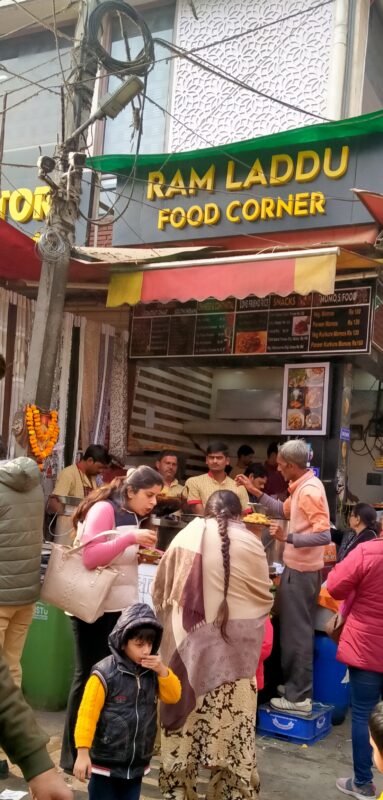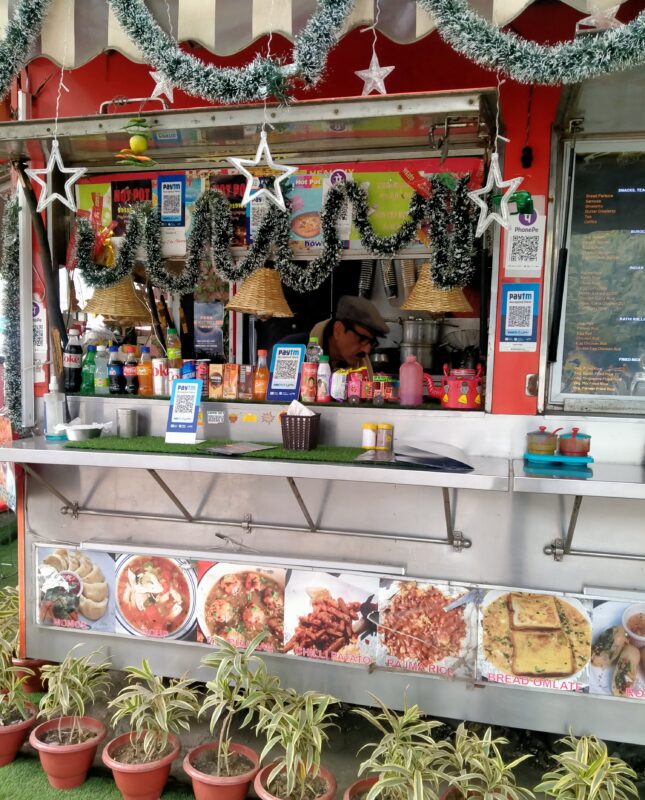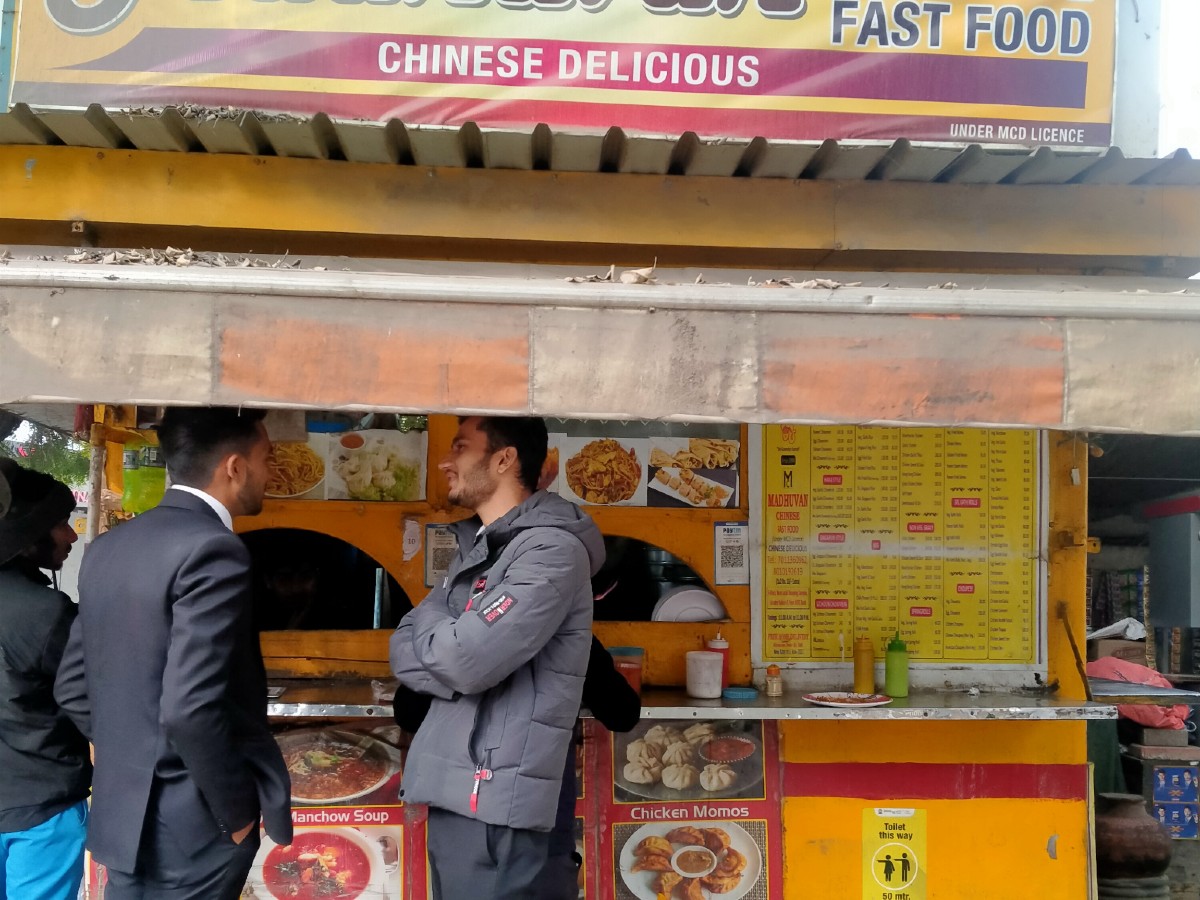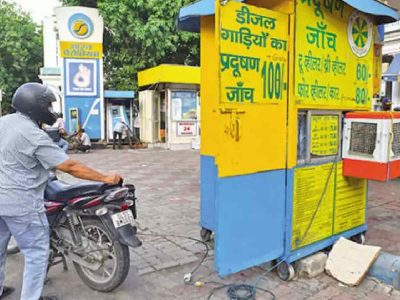As the sun sets, the lane outside Saket metro station in south Delhi transforms into a food street, with dozens of vendors lining up their colourful carts, selling everything from kathi rolls and aloo tikki to chilli potatoes.
Pankaj Kumar, owner of a litti chokha stall, says that he had increased the price of a plate of litti chokha from ₹40 to ₹50, but lost quite a few customers over the next three days.
“I had no other option [than to raise the prices]. Hum gareeb aadmi hain (I am a poor man). Have you noticed the increase in cost of ingredients — including refined oil, granulated wheat and vegetables,” says the 33-year-old.
“I came to Delhi about four years ago and worked as an assistant at a tea stallin Laxmi Nagar market. I learnt how to work and engage with the customers as it’s a skill that street vendors must possess. After working for about two years, I decided to shift to south Delhi area and run my own cart,” says Kumar.
Kumar’s daily income has dipped over the past few months. He blames the sky rocketing prices of kitchen ingredients.
“I was struggling and had no option but to increase the price. The number of customers has decreased because my regular customers comprised students returning from their coaching classes in the evening. I understand that students can’t spend so much on food but then I had no choice. I am just hoping that I don’t see worst days now,” sums up Kumar.
It is not just Kumar, who is complaining.
Since the time Russia invaded Ukraine in February last year, prices of crude and edible oils have been on the rise. India’s annual retail inflation shot up to a 17-month high in March. The Consumer Price Index (CPI)-based inflation was led by edible oils (18.79%), vegetables (11.64%), meat and fish (9.63%) and fuel and light (7.52%).
Core items get expensive
Ram Laddoo is a deep-fried ball made of pulses. It is crispy on the outside and fluffy on the inside. Topped with shredded white mooli (radish) and served with a tangy and green spicy chutney, carts selling Ram Laddoo can be spotted across the Capital.
But Ram Laddoo of Lajpat Nagar is the most popular.
The savoury is named after late Ram Babu, who set up a shop of this snack in 1983 in Lajpat Nagar market, popularly called Central Market.

started and spread out to all parts of the Capital
Babu’s son Charan Singh Yadav, 45, now mans the shop.
Sangeeta, a regular visitor to the Lajpat Nagar market, never forgets to buy a plate of Ram Laddoo.
She says, “I have been visiting Lajpat Nagar for quite a few years now. Shelling out 60 rupees for a plate of Ram Laddoo doesn’t feel painful. It is quite understandable. We all know that the kitchen ingredients are too costly. If we can pay, then why not. Moreover, the taste has remained the same over the years. I have witnessed their expansion, they’ve now added Chhole Bhature and Momos to the Ram Laddoo.”
Yadav thinks that people who do shopping in Lajpat Nagar market have enough disposable income toafford a plate of Ram Laddoo.
Yadav claims that he has to pay one lakh rupees a month in rent for his shop. Prior to this, he sold the savoury from a cart but now, he offers place in his shopfor customers to sit.
He raised the price of a plate of Ram Laddoo from Rs 50 to Rs 60 a month ago.
“Gas, pulses and mustard oil, all these are key requirements in making the lip-smacking Ram Laddoo. It is not possible for us to survive if we don’t increase the price. How will we pay the rent of the shop? And how will we feed our kids? We have recently expanded our menu and are trying to attract more customers.”
A few metres away from the Ram Laddoo shop is Nivesh Singh’s aloo-chaat cart. He is extremely sceptical about the next few months.
He begins, “I have to pay Rs 1,000 to the committee which comes uninvited to the market and unnecessarily bothers the vendors. When prices rise, I struggle a lot and always think of increasing the cost of the aloo-chaat plate but I am sure [if I increase the price], I will lose out on the bare minimum that I am earning right now.”
Singh revealed that he started using cheaper palmolein oil and also cheaper potatoes from the sabzi mandi instead of high quality, in order to reduce the cost. Earlier, he used to sell over 60 plates a day but today he sells barely 40.
Amit Kumar sells tea outside the Patel Chowk metro station. He too has raised the price of his tea from ₹12 to ₹15 per glass. However, Kumar feels he is lucky that his customers understand the situation.
“Mostly, it’s the people who work in these high-rises. When I explained that milk and cooking gas have become expensive, which I suppose all of us are aware of as every household is affected, people understood that the increase in cost of a cup of tea is natural. Moreover, I think the location of street vendors is an important factor,” explains Kumar whose father started the tea stall 40 years ago.
As per National Association of Street Vendors of India (NASVI), the rising inflation along with the implementation of Goods and Services Tax (GST) has severely affected the businesses of over 3,00,000 street vendors — a significant part of the informal economy — in the Capital. This has led to a drop of around 40% in their income in the past couple of months, which has forced most of them to jack up the prices of the items they sell.
Food vans struggle too
Ask the rickshaw pullers outside Greater Kailash metro station about Madhuvan Chinese Fast Food van and they will tell you its exact location. It is that popular.
The van looks old and run-down but it carries the experience of serving. It is afternoon on a wintry Thursday, and the office-goers read the menu painted on the yellow van. The van caters to hordes of customers every day.
Manjeet, 66, owner of the van, explains, “It is important to understand that with problems come solutions too. We haven’t changed our prices much over the last decade, because we believe that the trust we have built over the years with our customers is important. People are price-conscious. They can compromise a bit with taste, but if the food is no longer pocket-friendly, they won’t come. Hence, we researched the market well. We focus on long-term profit or turnover as we call it in business.”
The Madhuvan Chinese Fast Food van has no sitting space. Still, a large crowd gathers to eat the food served here. It’s been more than two decades now and the van is running well. The fact that it is approved by the Municipal Corporation of Delhi (MCD) is a plus. In fact, the approval is mentioned on the van clearly.
Over the years, MCD has helped the food van owners by issuing licences.
Before the arrival of food buses (a newer concept), food vans were serving people across the Capital at minimal rates.
However, they faced problems as they operatedwithout licence.
But things changed 2016 onwards as MCD started backing these little ‘enterprises’.
Ram Bilas Gupta, spokesperson of AAP party in south Delhi, tells Patriot, “The war between Russia and Ukraine affected prices a lot. Most street vendors are migrants who start business with minimal capital. It is difficult to sustain without support. Vendors have made immense contribution to the city and local communities as they provide food at very cheap rates which the lower middle-class can afford to pay.”
Unlike other vans, Hot Pot has moved beyond serving the regular Chin-jabi (mix of Chinese and Punjabi food items).

Chawal and Chhole Chawal from fast food
Located in Greater Kailash Part-1, the van takes pride in serving their special Rajma Chawal or Chhole Chawal.
Vineet, 29, who works at the van, says, “We are slightly lucky because right opposite our van, there’s an office complex. During the lunch hours, people working in the complex flock to our van. I assume that food vans have been catering to the middle-class and lower middle-class for a long time. Nothing ever will replace it. People love us because of the food and the variety we serve, and price isn’t a deterrent in buying food these days, at least for those who earn good money in these huge buildings. In fact, they sometimes become too kind and pay extra for our quick service.”
Hot Pot has sitting space as the owner has placed some chairs and decorated the little areaby the roadside.
Crash in earnings
“Prior to notebandi [demonetisation], I used to earn at least Rs 15,000 a month. But since notebandi, sales have reduced drastically and so has my income. I now earn Rs 10,000 or even less,” tells Vijnesh Kumar.
Kumar, 33, sells bhelpuri in Sarojini Nagar market. He carries the stall, which he claims weighs 40 kg, on his head.
Kumar observed that the loss in earnings is because of GST. While he is not running a big business to have his own GST number, he clearly claims that the items in the market have become too costly due to GST. Indirectly, the small vendors are bearing the brunt.
Not far from Kumar’s little stall is Rakesh Singh’s Gol Gappe cart.
Recalling the good old days, his eyes get moist as hesays, “Till about five years ago, my thela (cart) had customers flooding in. I have seen so many bad days but haven’t seen the times that we have had to face in the pandemic. I know no other thing except making Gol Gappe.”
Like the rest of them, Kumar is also thinking of shutting down his business and going back to his village and resume farming.





